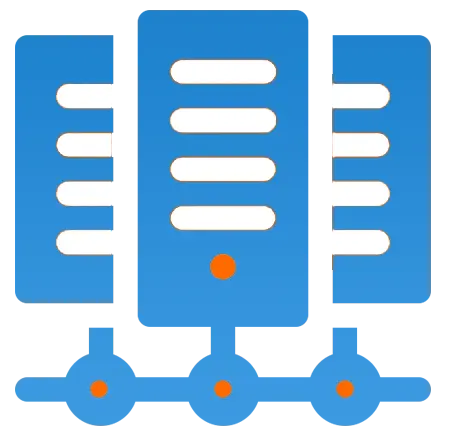Get 69% Off on Cloud Hosting : Claim Your Offer Now!
- Products
-
Compute
Compute
- Predefined TemplatesChoose from a library of predefined templates to deploy virtual machines!
- Custom TemplatesUse Cyfuture Cloud custom templates to create new VMs in a cloud computing environment
- Spot Machines/ Machines on Flex ModelAffordable compute instances suitable for batch jobs and fault-tolerant workloads.
- Shielded ComputingProtect enterprise workloads from threats like remote attacks, privilege escalation, and malicious insiders with Shielded Computing
- GPU CloudGet access to graphics processing units (GPUs) through a Cyfuture cloud infrastructure
- vAppsHost applications and services, or create a test or development environment with Cyfuture Cloud vApps, powered by VMware
- Serverless ComputingNo need to worry about provisioning or managing servers, switch to Serverless Computing with Cyfuture Cloud
- HPCHigh-Performance Computing
- BaremetalBare metal refers to a type of cloud computing service that provides access to dedicated physical servers, rather than virtualized servers.
-
Storage
Storage
- Standard StorageGet access to low-latency access to data and a high level of reliability with Cyfuture Cloud standard storage service
- Nearline StorageStore data at a lower cost without compromising on the level of availability with Nearline
- Coldline StorageStore infrequently used data at low cost with Cyfuture Cloud coldline storage
- Archival StorageStore data in a long-term, durable manner with Cyfuture Cloud archival storage service
-
Database
Database
- MS SQLStore and manage a wide range of applications with Cyfuture Cloud MS SQL
- MariaDBStore and manage data with the cloud with enhanced speed and reliability
- MongoDBNow, store and manage large amounts of data in the cloud with Cyfuture Cloud MongoDB
- Redis CacheStore and retrieve large amounts of data quickly with Cyfuture Cloud Redis Cache
-
Automation
Automation
-
Containers
Containers
- KubernetesNow deploy and manage your applications more efficiently and effectively with the Cyfuture Cloud Kubernetes service
- MicroservicesDesign a cloud application that is multilingual, easily scalable, easy to maintain and deploy, highly available, and minimizes failures using Cyfuture Cloud microservices
-
Operations
Operations
- Real-time Monitoring & Logging ServicesMonitor & track the performance of your applications with real-time monitoring & logging services offered by Cyfuture Cloud
- Infra-maintenance & OptimizationEnsure that your organization is functioning properly with Cyfuture Cloud
- Application Performance ServiceOptimize the performance of your applications over cloud with us
- Database Performance ServiceOptimize the performance of databases over the cloud with us
- Security Managed ServiceProtect your systems and data from security threats with us!
- Back-up As a ServiceStore and manage backups of data in the cloud with Cyfuture Cloud Backup as a Service
- Data Back-up & RestoreStore and manage backups of your data in the cloud with us
- Remote Back-upStore and manage backups in the cloud with remote backup service with Cyfuture Cloud
- Disaster RecoveryStore copies of your data and applications in the cloud and use them to recover in the event of a disaster with the disaster recovery service offered by us
-
Networking
Networking
- Load BalancerEnsure that applications deployed across cloud environments are available, secure, and responsive with an easy, modern approach to load balancing
- Virtual Data CenterNo need to build and maintain a physical data center. It’s time for the virtual data center
- Private LinkPrivate Link is a service offered by Cyfuture Cloud that enables businesses to securely connect their on-premises network to Cyfuture Cloud's network over a private network connection
- Private CircuitGain a high level of security and privacy with private circuits
- VPN GatewaySecurely connect your on-premises network to our network over the internet with VPN Gateway
- CDNGet high availability and performance by distributing the service spatially relative to end users with CDN
-
Media
-
Analytics
Analytics
-
Security
Security
-
Network Firewall
- DNATTranslate destination IP address when connecting from public IP address to a private IP address with DNAT
- SNATWith SNAT, allow traffic from a private network to go to the internet
- WAFProtect your applications from any malicious activity with Cyfuture Cloud WAF service
- DDoSSave your organization from DoSS attacks with Cyfuture Cloud
- IPS/ IDSMonitor and prevent your cloud-based network & infrastructure with IPS/ IDS service by Cyfuture Cloud
- Anti-Virus & Anti-MalwareProtect your cloud-based network & infrastructure with antivirus and antimalware services by Cyfuture Cloud
- Threat EmulationTest the effectiveness of cloud security system with Cyfuture Cloud threat emulation service
- SIEM & SOARMonitor and respond to security threats with SIEM & SOAR services offered by Cyfuture Cloud
- Multi-Factor AuthenticationNow provide an additional layer of security to prevent unauthorized users from accessing your cloud account, even when the password has been stolen!
- SSLSecure data transmission over web browsers with SSL service offered by Cyfuture Cloud
- Threat Detection/ Zero DayThreat detection and zero-day protection are security features that are offered by Cyfuture Cloud as a part of its security offerings
- Vulnerability AssesmentIdentify and analyze vulnerabilities and weaknesses with the Vulnerability Assessment service offered by Cyfuture Cloud
- Penetration TestingIdentify and analyze vulnerabilities and weaknesses with the Penetration Testing service offered by Cyfuture Cloud
- Cloud Key ManagementSecure storage, management, and use of cryptographic keys within a cloud environment with Cloud Key Management
- Cloud Security Posture Management serviceWith Cyfuture Cloud, you get continuous cloud security improvements and adaptations to reduce the chances of successful attacks
- Managed HSMProtect sensitive data and meet regulatory requirements for secure data storage and processing.
- Zero TrustEnsure complete security of network connections and devices over the cloud with Zero Trust Service
- IdentityManage and control access to their network resources and applications for your business with Identity service by Cyfuture Cloud
-
-
Compute
- Solutions
-
Solutions
Solutions
-
 Cloud
Hosting
Cloud
Hosting
-
 VPS
Hosting
VPS
Hosting
-
GPU Cloud
-
 Dedicated
Server
Dedicated
Server
-
 Server
Colocation
Server
Colocation
-
 Backup as a Service
Backup as a Service
-
 CDN
Network
CDN
Network
-
 Window
Cloud Hosting
Window
Cloud Hosting
-
 Linux
Cloud Hosting
Linux
Cloud Hosting
-
Managed Cloud Service
-
Storage as a Service
-
 VMware
Public Cloud
VMware
Public Cloud
-
 Multi-Cloud
Hosting
Multi-Cloud
Hosting
-
 Cloud
Server Hosting
Cloud
Server Hosting
-
 Bare
Metal Server
Bare
Metal Server
-
 Virtual
Machine
Virtual
Machine
-
 Magento
Hosting
Magento
Hosting
-
Remote Backup
-
 DevOps
DevOps
-
 Kubernetes
Kubernetes
-
 Cloud
Storage
Cloud
Storage
-
NVMe Hosting
-
 DR
as s Service
DR
as s Service
-
-
Solutions
- Marketplace
- Pricing
- Resources
- Resources
-
By Product
Use Cases
-
By Industry
- Company
-
Company
Company
-
Company
How moving to Multi-Cloud can revamp your business?
Table of Contents
“Cloud” is on course to overtake “all other forms of hosting” as the prevailing strategy among both established incumbents and digital natives as the pace of digitalization quickens. Without wanting to emphasize the obvious, any business that wants to compete in the digital economy requires the speed, scale, and agility that the cloud’s ubiquity delivers.
Business leaders in various areas of the economy are aware that they must improve their digital skills if they are to take advantage of the opportunities in the always-on environment. That awareness nearly often involves cloud computing platforms.
The relationship between cloud computing and digital transformation is widely acknowledged, with the cloud providing the scalability, flexibility, and services needed to support even the most ambitious of changes. Milind Govekar of Gartner has stated that “there is no business strategy without a cloud strategy” because of how closely cloud-native development and deployment are now tied to company success in a connected society.
By 2025, the majority of organizations, or 85%, will be switching to a cloud-first strategy, predicts Gartner. By then, cloud-native systems will be used for more than 95% of new digital workloads.
To put it another way, it is clear that businesses are no longer debating whether to use the cloud for their mission-critical digital development. Instead, we should examine how.
A brief About Cloud
Cloud is a colloquial phrase describing a variety of cloud computing possibilities, including hybrid, multi-cloud, private, and public clouds.
The term “on-demand supply of computing power, database storage, applications, and other IT resources over a cloud services platform through the internet with pay-as-you-go pricing” is used by AWS to describe cloud computing.
Cloud platforms that you can consider choosing
The major benefit of the private version is that companies have exclusive access to resources that are either provided by a data center or a cloud provider. Contrarily, when we talk about cloud computing, we typically refer to the public cloud, which is a shared service.
The average person is aware of what the cloud is because of the exponential growth of cloud-centric brands over the past ten years in linked society, but they are less likely to understand how it actually operates. That is not truly a choice for those who make decisions.
In addition to taking care of all the infrastructure requirements related to supplying digital services, providers like AWS, Azure, Cyfuture and GCP also importantly give their clients virtually unlimited flexibility to scale up and down as required.
Although hybrid and multi-cloud are sometimes used synonymously, they refer to significantly different methodologies. Hybrid, properly speaking, is the combination of traditional data centers and bare metal, or cloud infrastructure. As a result, businesses that are shifting to the cloud gradually prefer to use it.
As the name implies, multi-cloud entails using more than one cloud provider to provision IT. Many would contend that operating as a cloud-first business is also the way of the future.
Should you choose one Cloud Provider?
The high-profile cloud outages of the previous year served to remind IT leaders why security and resilience continually top the agenda when it comes to cloud selection, as many of us in the digital engineering area are more than aware.
In 2021, major brands like Google, Slack, Venmo, Disney Plus, Facebook, Tinder, iRobot, The Washington Post, and Sony’s PlayStation network experienced service interruptions as a result of cloud service provider failures. They all faced significant service outages, which damaged not only the companies’ reputations with customers but also their reliance on the cloud ecosystem.
The outages don’t invalidate the primary justifications for migrating to the cloud, but they do make IT executives reconsider placing all their eggs in the basket of a single cloud provider.
Multi-cloud open doors to several advantages for your business
The availability of various use cases
Although making exact predictions about the future might be challenging, the major cloud trends strongly imply that businesses will be utilizing a greater variety of cloud use cases than ever before, cooperating with numerous partners and technological experts.
Edge computing- the new trend
The growth of edge computing in recent years has been attributed to the expansion of industrial IoT and is being propelled by the manufacturing and retail industries. The distinction between edge and cloud computing has become more hazy as use cases for edge processing have increased. Every cloud provider must have an edge strategy, and some (naturally including the market leader AWS) have a specific set of services designed to streamline data processing.
Planning for a cloud trip is being influenced by the need to make all data processing and transition as smooth as feasible. When you consider the idea of digital maturity as a competitive advantage, this becomes even more crucial.
The Future of Multi-Cloud
Multi-cloud hosting or hybrid systems may also be the sole option for businesses that must adhere to regulatory requirements about where and how they process data.
Whether businesses adopt a multi-cloud hosting strategy on purpose or out of necessity, managing a more complicated cloud environment will always need more time and resources. Numerous customized arrangements have the potential to provide numerous advantages (compliance, security, efficiency, scale, and performance), but they also need time and money to investigate and manage.
When all the components are in place, the thought of managing interoperability, complexity, and security across several clouds may be enough for some businesses to continue with the single vendor model.
This could first seem enticing, but to compete in a digital world, you must quickly and efficiently create new products and services. From a purely business standpoint, that implies that the sensible decision-maker must take into account every alternative. The ability to operate in a digital society will soon be a reality for multi and hybrid cloud models thanks to the ongoing increase of cloud capabilities and service offerings from cloud providers.
Recent Post

Stay Ahead of the Curve.
Join the Cloud Movement, today!
© Cyfuture, All rights reserved.
Send this to a friend

 Pricing
Calculator
Pricing
Calculator
 Power
Power
 Utilities
Utilities VMware
Private Cloud
VMware
Private Cloud VMware
on AWS
VMware
on AWS VMware
on Azure
VMware
on Azure Service
Level Agreement
Service
Level Agreement 


















